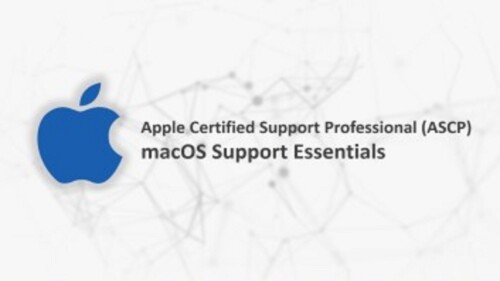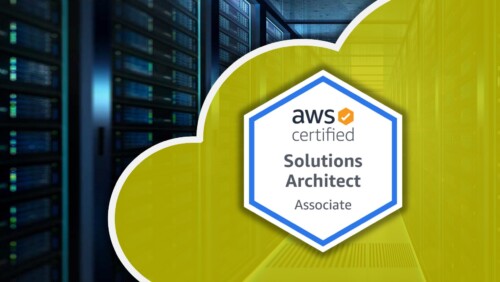Description
Overview
The CompTIA Network+ certification helps provide top employers, including Dell, Intel, Apple and Cisco, with team members who are skilled in installing, configuring, securing and troubleshooting critical IT infrastructure. Greater than 90% of employers are looking for CompTIA certifications and the Network+ certification is no exception.
Businesses today demand flexibility and optimal productivity when designing and implementing networks. The Network+ certification validates your understanding of network architecture, including software-defined networking, and network integrations, and proves your ability to use the latest standards and innovations when executing network deployments.
The Network+ certification places a significant focus on the skills required to ensure optimal network performance and high availability as well securing networks against malicious attacks and protecting a business’ data.
Together with CompTIA A+ and Security+, the Network+ certification is an essential gateway certification laying the groundwork needed to pursue more advanced certifications that higher level IT careers demand.
- 21:39:00 Hours
- 12 Months Access
- Presented by highly qualified, industry leading experts
Course Details
Objectives
- Next step in your IT career growth after completing CompTIA A+ certification.
- A trusted certification that enterprise level employers are looking for.
- Validate your skills to design, deploy configure, troubleshoot, and optimize physical and virtualized networks.
- Prove your ability to support and administer network devices such as switches and routers
- Show your ability to secure networks, apply standards and protocols.
- Essential gateway certification required for IT career growth.
Audience
- Junior IT Professionals in a technical support role who wish to advance their career in IT.
- Network administrators, network technicians, network installers, help desk technicians or IT cable installers.
- Individuals aspiring to become network and system engineers as a gateway towards further specialized certifications.
Prerequisites
- Before starting your journey to become CompTIA Network+ certified, we recommend that you meet the following prerequisites:
Prior to starting Network+ exam preparation
- CompTIA A+ certification.
- 1 Year experience in a technical IT role.
Prior to taking the CompTIA Network+ exam:
- Completion of our CompTIA Network+ training program.
- At least 9 to 12 months of networking hands-on experience in the lab or field.
- Thorough understanding of all topics detailed in the exam objectives.
Course Outline
Curriculum:
Building upon your CompTIA A+ certification, the Network+ certification curriculum covers the basics of networking, IT infrastructure implementation, network operations, and network security as well as how to maintain a strong network.
Networking Fundamentals
- Compare and contrast the Open Systems Interconnection (OSI) model layers and encapsulation concepts.
- Explain the characteristics of network topologies and network types.
- Summarize the types of cables and connectors and explain which is the appropriate type for a solution.
- Given a scenario, configure a subnet and use appropriate IP addressing schemes.
- Explain common ports and protocols, their application, and encrypted alternatives.
- Explain the use and purpose of network services.
- Explain basic corporate and datacenter network architecture.
- Summarize cloud concepts and connectivity options.
Network Implementations
- Compare and contrast various devices, their features, and their appropriate placement on the network.
- Compare and contrast routing technologies
- and bandwidth management concepts.
- Given a scenario, configure and deploy common Ethernet switching features.
- Given a scenario, install and configure the appropriate wireless standards and technologies.
Network Operations
- Given a scenario, use the appropriate statistics and sensors to ensure network availability.
- Explain the purpose of organizational documents and policies.
- Explain high availability and disaster recovery concepts and summarize which is the best solution.
Network Security
- Compare and contrast common types of attacks.
- Given a scenario, apply network hardening techniques.
- Compare and contrast remote access methods and security implications.
- Explain the importance of physical security.
Network Troubleshooting
- Explain the network troubleshooting methodology.
- Given a scenario, troubleshoot common cable connectivity issues and select the appropriate tools.
- Given a scenario, use the appropriate network software tools and commands.
- Given a scenario, troubleshoot common wireless connectivity issues.
- Given a scenario, troubleshoot general networking issues.
Top of Form
NETWORKING FUNDAMENTALS
- Overview
- OSI Model
- OSI and TCP-IP Models
- Encapsulation
- Network Topologies
- Network Types
- Virtualization
- Service Provider Links
- Copper Cables and Connections
- Fiber Cables and Connections
- Ethernet Standards
- Cable Management
- IP Addressing Schemes and Contexts
- IP Addressing IPv4
- IP Addressing Subnetting Basics
- IP Addressing Subnetting Example
- IP Addressing Subnetting Scenarios
- IP Addressing IPv6
- Protocols and Ports
- Network Services
- Network Services DNS
- Datacenter Network Architecture
- Cloud and Networking Concepts
Network Implementations
- Networking and Networked Devices
- Routing and Bandwidth Management
- Ethernet Switching
- Wireless Infrastructure
- Wireless Encryption Standards
- 11 Standards
- Cellular Technologies
NETWORK OPERATIONS
- Performance Metrics
- Interface Statistics
- Device Logs
- SNMP
- Environmental Factors
- Plans and Procedures
- Plans and procedures – BCDR
- Security Policies
- Organizational Documentation
- High Availability and Disaster Recovery
NETWORK SECURITY
- Security Concepts
- Security – Cryptography Basics
- Security – Defense in Depth
- Security – Authentication Methods
- Security – Assessment Types
- Technology-based Attacks
- Remote Connections
- Social Engineering
- Virtual Private Networks
- Physical Security
- Network Hardening – Best Practices
- Network Hardening – Wireless Security
NETWORK TROUBLESHOOTING
- Troubleshooting – Identify The Problem
- Troubleshooting – Establish and Test a Theory
- Troubleshooting – Plan and Implement a Solution
- Troubleshooting – Verify System Functionality
- Troubleshooting – Document The Issue
- Cabling Tools
- Cabling Issues
- Network Software Tools
- Troubleshooting With Ping
- IP Addressing Commands
- DNS Troubleshooting Commands
- Route Troubleshooting Commands
- Information Gathering Commands
- Additional Network Commands
- Wireless Network Issues
- Addressing Issues
- Network Service Issues
- Routing and Switching Issues



